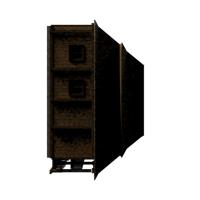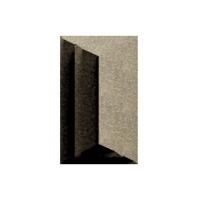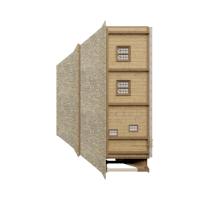Synagogue in Mogielnica (1936 - 1939) by Adam Miziołek [OBJ]









The digital reconstruction of the Mogielnica synagogue was prepared using Archicad 26. The entire process was conducted in strict accordance with the principles of the Scientific Reference Model method. The preparation of the model was preceded by the appropriate collection, analysis and sorting of sources, the evaluation of which was carried out using the original method. The object contains information on the certainty of the sources and the accuracy of the information they contain, as well as the detail of the model geometry.
The Mogielnica Synagogue is a wooden synagogue built in the second half of the 19th century in Mogielnica, now a town in Poland, in Mazovia, situated by the Mogielanka river. It was constructed after 1856 on Dół Street, north-east from Mogielnica's market square. After damage caused during the First World War it was renovated in the 1920s. The scope of the work included repairing the collapsed roof, shoring up the plinth and raising the walls. In September 1939, at the beginning of the Second World War, the synagogue was burnt down by the Germans. The building was never reconstructed.
The synagogue was oriented, located on the road leading from Mogielnica to Grójec. It was a two-storey building, made of a log construction, with approximate dimensions of 10 by 16 metres and a height of about 10 metres. It was designed on a rectangular plan consisting of two main parts - the main hall, with roughly square proportions, and a vestibule with a separate babiniec - the women's prayer room. The front elevation is symetrical with a triaxial two-storey column portico. On the first floor, a another babiniec, accessible from an external balcony. The whole covered with a hipped Polish hipped roof, carpentry, probably covered with wooden shingles. The interior is partly polychromed, mainly with floral and animal motifs. The author of the original design is unknown.